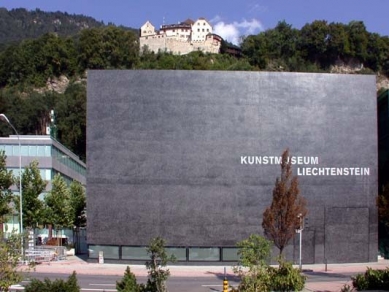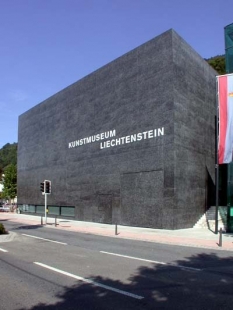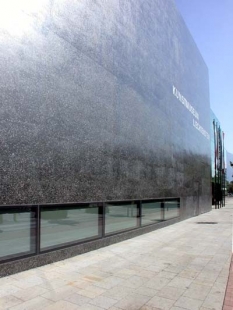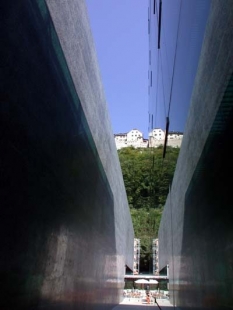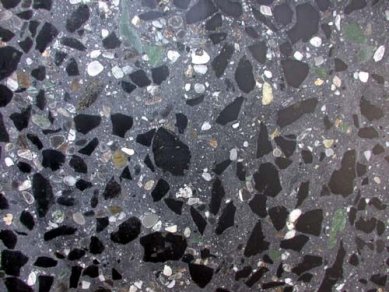
Kunstmuseum Liechtenstein

 |
The competition for the museum was announced in 1997. Morger and Degelo won second prize, but the winning proposal did not comply with the building regulations. The museum hosts both a permanent collection of art and serves as a venue for temporary exhibitions. The permanent collection is one of the most significant of its kind in the world. Interestingly, a substantial part of it was amassed by the Liechtensteins during their service at the court of Rudolf II in Prague.
The museum is a precisely shaped block with a footprint of 60 x 25 meters. The exhibition area totals 1750 m². The most astonishing element of the museum is its outer shell, which has recently become a trend in museums. Architects seem to reject competing with the exhibited works in the exhibitions and transfer "their art" onto the surfaces of the museums. In Vaduz, the surface of the museum is cast from a single mass - a mixture of concrete, basalt, asphalt, ash, and who knows what else. The entire surface is polished, waxed, and contains no joints, except for the entrance and window openings. The whole museum thus appears as one gigantic homogeneous stone cube. Unfortunately, nothing from the shell penetrates into the interior, so there can be no talk of digging a la Zumthor. The interiors of the museum are conventionally modern - white walls, oak floors, and a light ceiling. It can be shaded into complete darkness or maximally brightened according to the needs of the exhibited artifacts.
The museum offers several possible paths to consume art, depending on where the visitor starts. Temporary thematic exhibitions are usually placed on the ground floor, which, thanks to the glass walls, attract potential passersby into the interior, while the permanent collection occupies the upper floors. The basement serves as the operational background of the museum.
Kunstmuseum Liechtenstein has joined the ranks of excellent contemporary museums in the Alpine region. The quality of the exhibition is wrapped in an ambitious coat, which gives the museum an impression of stability and solidity. The architecture of the building reflects the best that Swiss minimalism can offer to the world today.
The English translation is powered by AI tool. Switch to Czech to view the original text source.
0 comments
add comment



